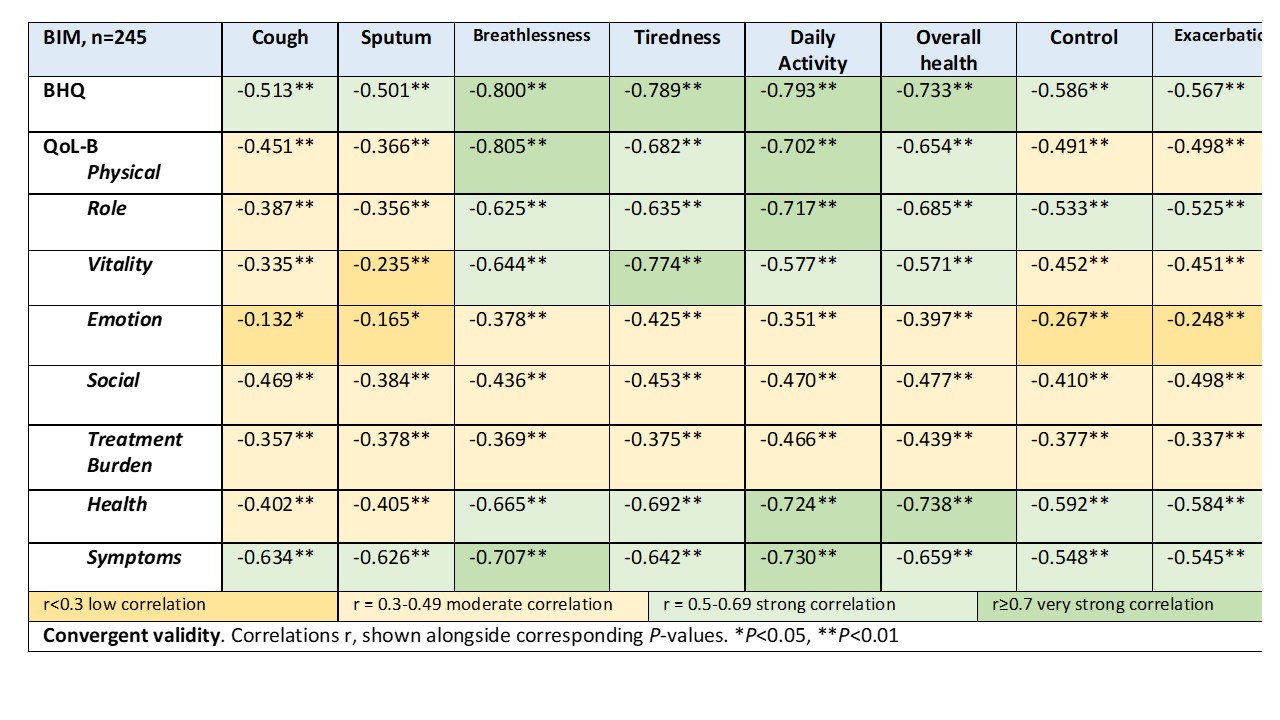Abstract
Objective: Investigate the relationship between sputum colour, a biomarker of neutrophilic inflammation, and long term outcomes in bronchiectasis.
Methods: A 4-point sputum colour chart (Murray scale) was used in the EMBARC registry which reviews bronchiectasis patients annually to collect long term outcome data.
Results: 19324 patients were enrolled from 31 countries. 13484 patients reported regular sputum expectoration with a sputum colour grade. 5541 had mucoid sputum (40.4%), 5380 mucopurulent (39.9%), 2486 purulent (18.4%) and 177 severe purulent (1.3%). Patients with more purulent sputum had higher BSI scores, lower FEV1, and more frequent chronic infection including with P.aeruginosa. During 5 years follow-up, baseline sputum colour was strongly predictive of future exacerbations. Compared to patients with mucoid sputum (1.0 reference), those with more purulent sputum experienced more exacerbations (IRR1.26 95%CI 1.19-1.33, 1.45 95%CI 1.36-1.55 and 1.54 95%CI 1.26-1.89, all p<0.0001- figure). Similar results were observed for severe exacerbations (hospitalisation)(IRR1.29 95%CI 1.19-1.39, 1.73 95%CI 1.58-1.90 and 2.01 95%CI 1.54-2.63, all p<0.0001). Mortality significantly increased with increasing sputum purulence, HR1.12 95%CI 1.01-1.24,p=0.027 indicating a 12% increased risk of death for each 1point increase in sputum purulence.
Conclusion: Sputum colour is a simple biomarker associated with future outcomes.
